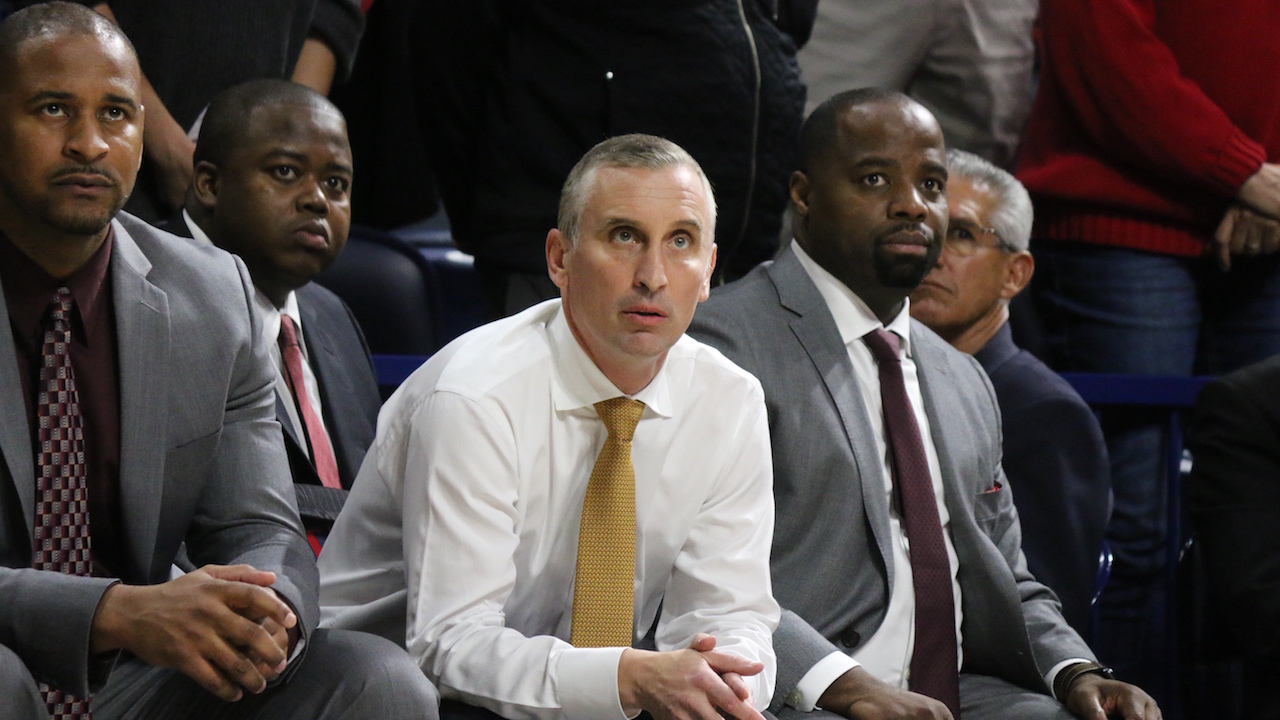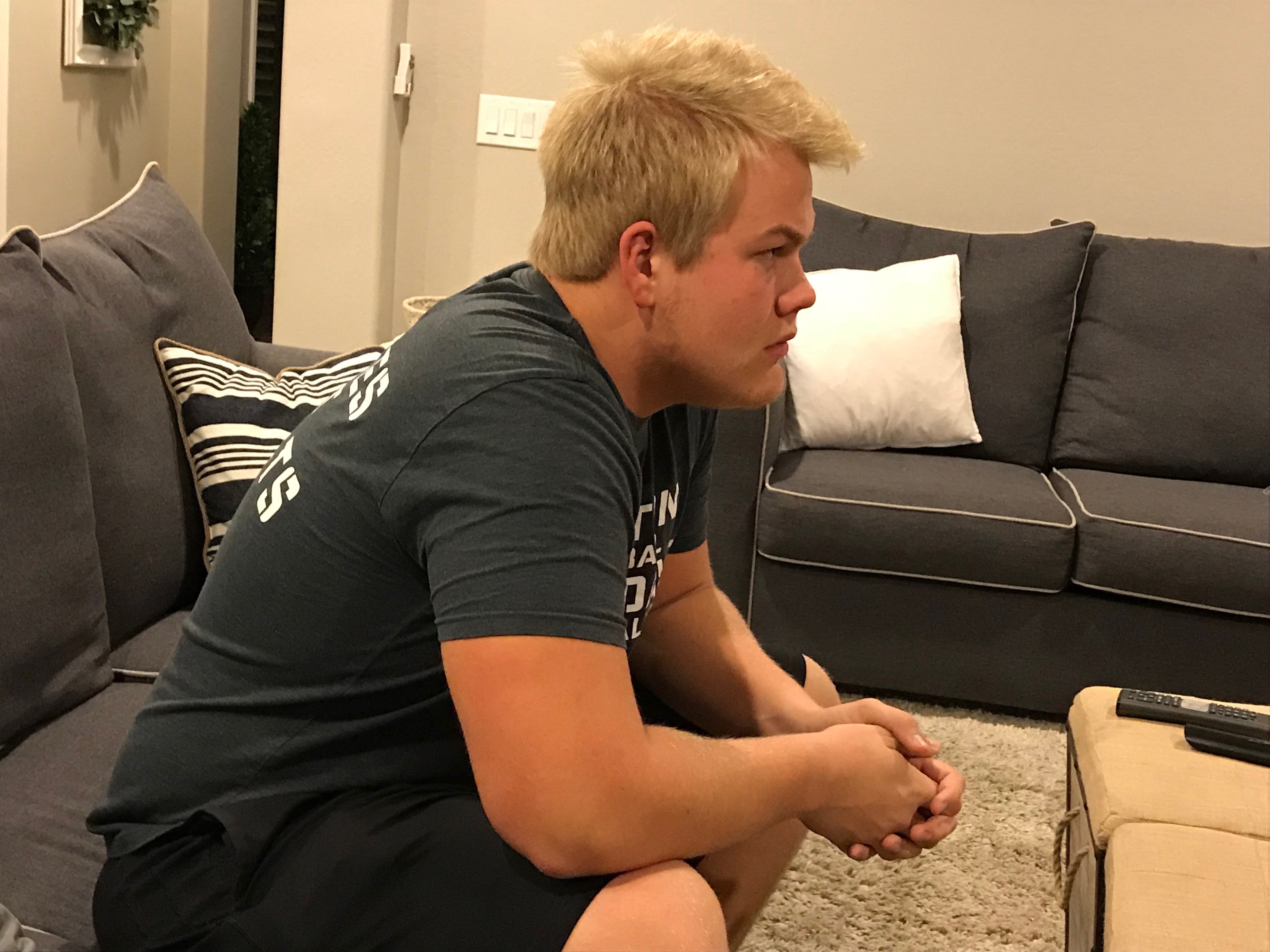Story by Justin Toscano
(Photo credit: Jack Harris / Walter Cronkite Sports Network)
When Grant and Missy Kroeger looked at prospective high schools for their daughter Kylie four years ago, a girls lacrosse team was a must. The only issue? No school in the Bay Park area of San Diego, California, had one or was open to starting one. The Kroegers even pitched their idea of launching a program themselves, but one local athletic director turned it down and referred Kylie to cross country, a sport in which she had little interest.
“Our whole intent in starting the program was so that our kid could play,” Missy said over the phone. “We were like, ‘We don’t care if they’re awful, we don’t care if we have to raise $30,000 by ourselves in three months. We’re going to do it.’”
The family searched a bit further from home and finally hit the jackpot as Mission Bay High School’s Jorge Palacios thought it was a no-brainer. He not only welcomed a new lacrosse program— on the condition the Kroegers funded it themselves — but his school also featured an International Baccalaureate (IB) academic program, which the family deemed important.
Both sides benefitted as Kylie continued playing lacrosse while Palacios increased his school’s profile. Mission Bay is part of a choice school district and there are a handful of high schools in close 
 proximity, so Palacios always looks for an edge on the competitors.
proximity, so Palacios always looks for an edge on the competitors.
Furthermore, lacrosse was mainly played at schools with more affluent demographics than Mission Bay, which is primarily middle class. And Palacios admittedly knew nothing about the sport, so if he had a family willing to do all the work, why not let them?
“I saw that as an opportunity to add to our list of programs that we could offer as reasons why kids may want to come here,” he said in a phone interview.
So it began.
Missy admits the family didn’t know what it was stepping into until it was overcome with a wave of to-dos, from fundraising to recruiting talent to reaching out to local press as a way of generating interest. According to Grant, they had to raise $12,000 per team — boys and girls — but eventually received a grant from US Lacrosse that provided the school with equipment and reduced the target number to about $8,000 for each squad.
Missy, whom Grant dubbed the “communication manager,” said she directed community relations, team relations, parent relations, and anything and everything else under that wide umbrella. It was an important role because if the community wasn’t excited about the startup program, fundraising efforts would fail miserably.
The Kroegers raised money using every method from pancake breakfasts to Snap! Raise, a fundraising platform. They gave handouts to anyone who donated. They also held an annual alumni event that had live music and an auction. The San Diego Padres and then-San Diego Chargers donated equipment and memorabilia for folks to bid on during the event, and local sports bars, restaurants and companies pitched in, too.
On campus, Kylie spearheaded an effort to increase awareness by going around to different school groups. She would sometimes hand out freebies. Other times, the family promoted lacrosse during soccer and field hockey events because Kylie, who also played those two sports, had been recruiting teammates.
All of this work for a sport that, as Missy says, is only “beginning to hit its stride” in San Diego.
“We were bored with soccer,” she said. “Our kids wanted to experience lacrosse and it was new out here, and why not?”
Kylie didn’t start lacrosse until 7th grade and when Mission Bay’s program was ready to hit the field in the spring of 2014, she was the only girl who’d ever picked up a stick. The others were clueless. Missy said most parents cringed during the first few practices. Two weeks later, they were impressed at the progress because, well, at least it was something.
Grant laughed as he recalled the one time at practice where a girl picked up the ball with her hand, a blunder worthy of a facepalm. Missy gave a pitiful chuckle as she spoke about that first season.
“Not going to lie, we had a lot of non-athletes the first year,” Missy said.
Grant, the coach who still oversees the program to this day, spent hours teaching stick skills and rules. Just about the only positive may have been that, according to Missy, the girls didn’t care if they won or lost.
Good thing, because they won just once.
“We had zero points multiple times,” Kylie said. “It was really tough.”
Grant also had to police commitment, which wasn’t easy. The girls had enough for a full lineup and maybe a few substitutions that first season, and that’s if everyone showed up, which wasn’t a guarantee. He couldn’t use a show of force and dismiss people because, well, his hands were tied.
“That’s always been a challenge when you don’t have the numbers to say we don’t need you, when we actually need you,” Grant said over the phone.
As Kylie stood on the practice field at Arizona State — which ironically is in its inaugural year as a Division I women’s lacrosse program — she grinned and shook her head as she reflected on the frustration of that season. How do you motivate girls who grew up playing other sports, most of which who only joined Mission Bay lacrosse to add an extra activity to their college applications? She often struggled with being a freshman thrust into a leadership position, though it’s helped her to this day.
Slowly and surely, Mission Bay lacrosse has improved. Last year, the girls went to Division II CIF Finals and though they lost by a goal, Kylie was relieved to see that her teammates were upset about it. “Finally, they cared,” she thought to herself. All those times where girls missed practices and games, all of the losing, was worth it.
Kylie didn’t see a future playing Division I lacrosse in college during her first two years of high school. The sun started to peak through the clouds on that idea when Mission Bay turned a corner during her junior season, the same year she joined a club team. She now holds unique perspective at Arizona State, where some of her teammates may not be accustomed to the instability and insecurity of playing for a brand-new program.
“If I didn’t have the opportunity to start a new program, I wouldn’t be here,” said Kylie, who starts for the Sun Devils.
Lindsey Price, one of the originals, now plays at Delaware State. One boy plays club lacrosse at UCLA. Others will soon follow, and even those who don’t play in college are still part of the family the Kroegers have built over the past four years.
“We are like parents to 55 kids, there’s no doubt about it,” said Missy, who is sure to adopt more kids as the program continues.
Mission Bay boys and girls are regularly sending college coaches snippets of recent performances in hopes of getting recruited. Grant expects to inherit more and more students with lacrosse experience in the next couple years, so the days of teaching the basics from scratch may be behind him.
Nowadays, students can’t wait for other sports to end. They look forward to playing lacrosse and being part of a rising program that just earned CIF certification last year. Both the boys and girls teams won league championships last season and the school recently raised the banners, the first physical representations of success but certainly not the last.
“I think if they had to do it over again, they’d probably invest a couple thousand dollars, $5,000 or $10,000 to start a lacrosse program,” Palacios, the athletic director, said of the schools that turned down the Kroegers.
Related posts:
Sports360AZ
We provide exclusive Arizona sports stories from the pros, college, and high school levels. Bookmark our site or follow us on Twitter or Facebook for all your local sports news!




